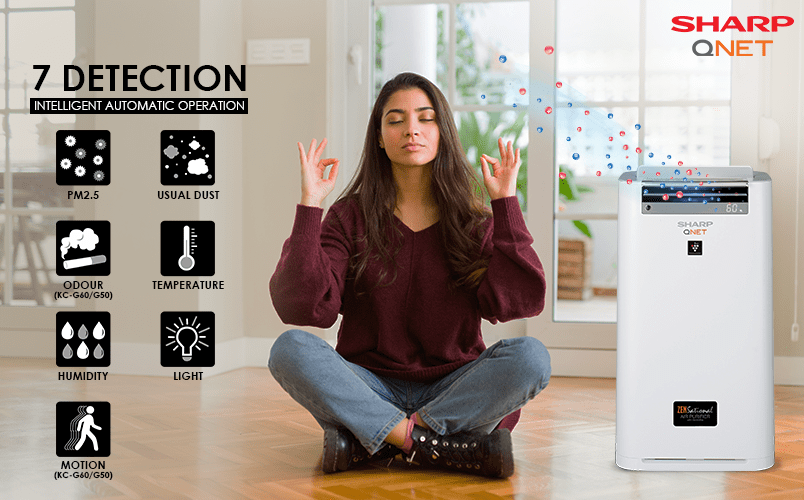Indoor air pollution is a significant health risk that often goes unnoticed. According to the World Health Organization (WHO), it is estimated that 4 million people die prematurely each year due to illnesses caused by indoor air pollution. This alarming figure highlights the urgent need for greater awareness and action to address this issue.
Indoor air pollution can be caused by a variety of factors. This include tobacco smoke, cooking fumes, household chemicals, and poor ventilation. These pollutants can build up in enclosed spaces and lead to a range of health problems. The health problems include respiratory illnesses, cardiovascular disease, and even cancer. Children and the elderly are particularly vulnerable to the effects of indoor air pollution, as their respiratory systems are still developing or weakened.
Sources of Indoor Air Pollution
One of the main sources of indoor air pollution is tobacco smoke. Exposure to second-hand smoke can increase the risk of lung cancer, heart disease, and stroke. In addition, the chemicals released from tobacco smoke can cause respiratory illnesses such as asthma and chronic obstructive pulmonary disease (COPD).
Cooking fumes are another common source of indoor air pollution. Burning food, frying, and grilling can release harmful particles and chemicals into the air, such as carbon monoxide, nitrogen oxides, and volatile organic compounds (VOCs). These pollutants can irritate the respiratory system, leading to respiratory illnesses and exacerbating existing conditions such as asthma.
Household chemicals, such as cleaning products and air fresheners, can also contribute to indoor air pollution. Many of these products contain VOCs, which can cause headaches, dizziness, and respiratory problems. Long-term exposure to these chemicals can increase the risk of cancer and other chronic illnesses.
Poor ventilation can also contribute to indoor air pollution by trapping pollutants inside the home. Without proper ventilation, pollutants can build up to dangerous levels, leading to a range of health problems.
To reduce the risk of indoor air pollution, it is essential to take steps to improve indoor air quality. This can include using natural cleaning products, avoiding smoking indoors, ensuring proper ventilation, and investing in an air purifier with sophisticated technology to remove pollutants from the air.
Indoor Air Pollution – Health Impacts
Indoor air pollution can have a range of negative effects on our health. Some of the most common symptoms of indoor air pollution include worsening asthma, allergies, and other respiratory problems. People may experience shortness of breath, coughing, and sinus congestion. Headaches and nausea are also common, as well as eye, skin, nose, and throat irritations.
Indoor air pollution can also lead to more severe symptoms such as memory loss, dizziness, fatigue, and even depression. It’s important to be aware of these symptoms and take steps to improve indoor air quality to reduce the risk of health problems caused by indoor air pollution.
SHARP-QNET ZENsational Air Purifier- Solution to Clean Air
SHARP and QNET have joined forces to introduce the SHARP-QNET ZENsational Air Purifier. It is a cutting-edge air purification system that boasts a range of advanced features. This includes patented Plasmacluster ion technology, an integrated humidifier, and seven detection-intelligent modes – making it the first of its kind in its category.
This air purifier has been rigorously tested by 33 global laboratories and has been proven to be both safe and efficient in cleaning indoor air. Its unique ability to emit positive and negative ions, which are naturally present in the environment, further enhances its effectiveness.
Attractive Features of SHARP Air Purifier
The SHARP-QNET ZENsational Air Purifier comes equipped with several remarkable features that set it apart from other air purifiers. This includes its 7-Detection Intelligent modes that can detect PM2.5, usual dust, odour, temperature, humidity, light, and motion. The high-density Plasmacluster ions that this purifier emits can effectively kill 29 different types of pathogens. These pathogens include H1N1, MRSA, E. coli, and Cladosporium, from both the air and various surfaces. The PANDAA filter also has a dual action function that neutralizes gases and converts them into harmless gases, making the air you breathe even cleaner.
In addition, the SHARP-QNET ZENsational Air Purifier features an integrated humidifier that helps to keep your skin healthy and guards against throat infections. The filter life of this purifier is impressive, with a lifespan of 10 years. It is also ideal for room spaces of up to 530 sq. ft.
To Conclude

Indoor air pollution is a serious health risk that needs to be addressed. By taking steps to improve indoor air quality, we can help to reduce the risk of respiratory illness, cardiovascular disease, and other health problems associated with indoor air pollution. The SHARP-QNET ZENsational Air Purifier is an excellent choice for those seeking a high-performance air purification system that is both effective and reliable.










